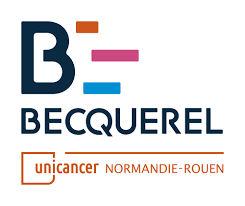Development and Validation of a Predictive Model of Severe Fatigue After Breast Cancer Diagnosis: Toward a Personalized Framework in Survivorship Care
Abstract
PURPOSE Fatigue is common and troublesome among breast cancer survivors; however, limited tools exist to predict its risk. PATIENTS AND METHODS Participants with stage I-III breast cancer were prospectively included from CANTO (ClinicalTrials.gov identifier: NCT01993498 ), collecting longitudinal data at diagnosis (before the initiation of any cancer treatment) and 1 (T1), 2 (T2), and 4 (T3) years after diagnosis. The main outcome was severe global fatigue at T2 (score ≥q 40/100, European Organisation for Research and Treatment of Cancer (EORTC) Quality of Life Questionnaire-C30). Analyses at T3 were exploratory. Secondary outcomes included physical, emotional, and cognitive fatigue (EORTC Quality of Life Questionnaire-FA12). Multivariable logistic regression models retained associations with severe fatigue by bootstrapped Augmented Backward Elimination. Validation methods included 10-fold internal cross-validation, overoptimism-corrected area under the receiver operating characteristic curves, and external validation. RESULTS Among 5,640, 5,000, and 3,400 patients at T1, T2, and T3, respectively, the prevalence of post-treatment severe global fatigue was 35.6%, 34.0%, and 31.5% in the development cohort. Retained risk factors for severe global fatigue at T2 were severe pretreatment fatigue (adjusted odds ratio v no 3.191 [95% CI, 2.704 to 3.767]); younger age (for 1-year decrement 1.015 [1.009 to 1.022]), higher body mass index (for unit increment 1.025 [1.012 to 1.038]), current smoking behavior ( v never 1.552 [1.291 to 1.866]), worse anxiety ( v noncase 1.265 [1.073 to 1.492]), insomnia (for unit increment 1.005 [1.003 to 1.007]), and pain at diagnosis (for unit increment 1.014 [1.010 to 1.017]), with an area under the receiver operating characteristic curve of 0.73 (95% CI, 0.72 to 0.75). Receipt of hormonal therapy was a risk factor for severe fatigue at T3 ( v no 1.448 [1.165 to 1.799]). Dimension-specific risk factors included body mass index for physical fatigue and emotional distress for emotional and cognitive fatigue. CONCLUSION We propose a predictive model to assess fatigue among breast cancer survivors, within a personalized survivorship care framework. This may help clinicians to provide early management interventions or to correct modifiable risk factors and offer more tailored monitoring and education to patients at risk of severe post-treatment fatigue.
Domains
Life Sciences [q-bio]
Origin : Publisher files allowed on an open archive
licence : CC BY NC ND - Attribution - NonCommercial - NoDerivatives
licence : CC BY NC ND - Attribution - NonCommercial - NoDerivatives
